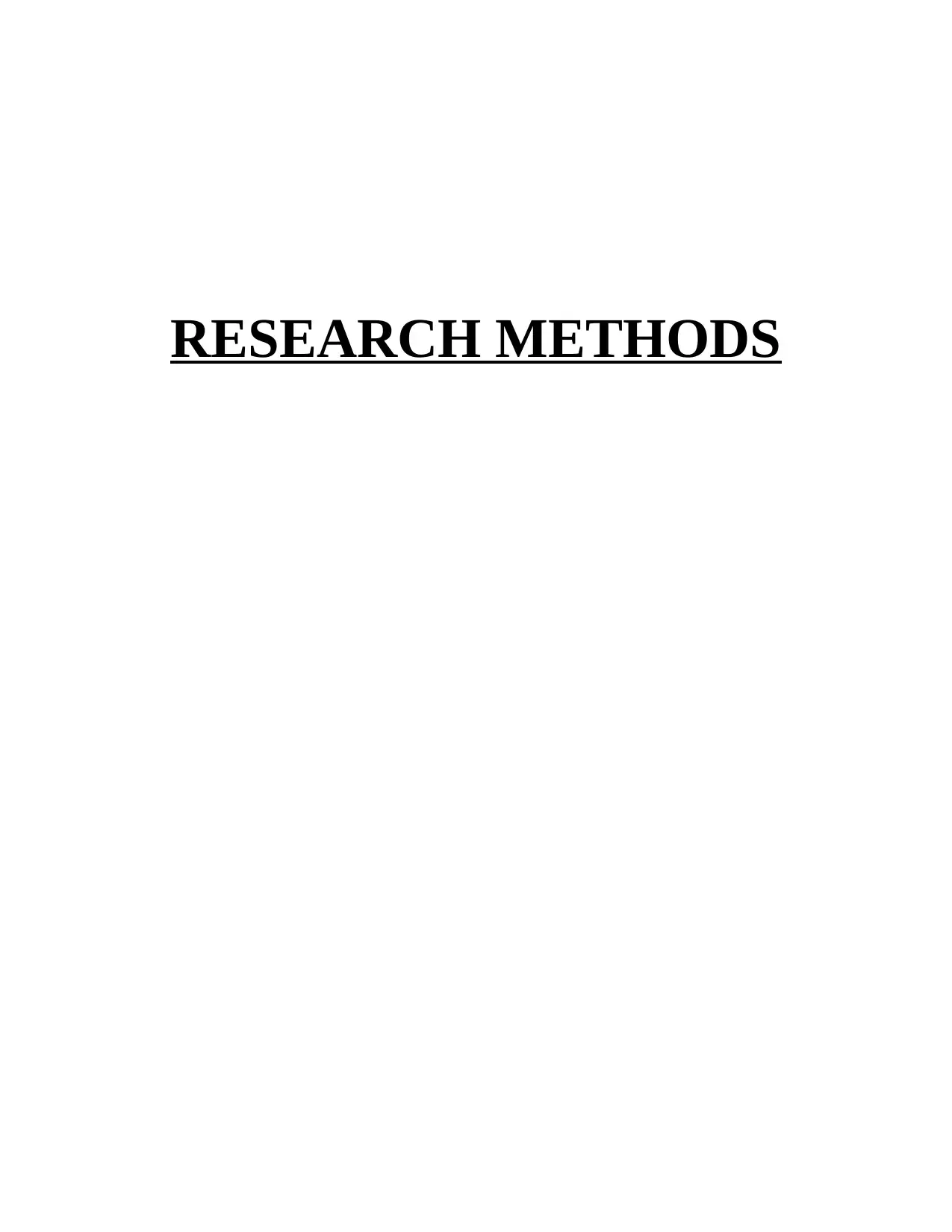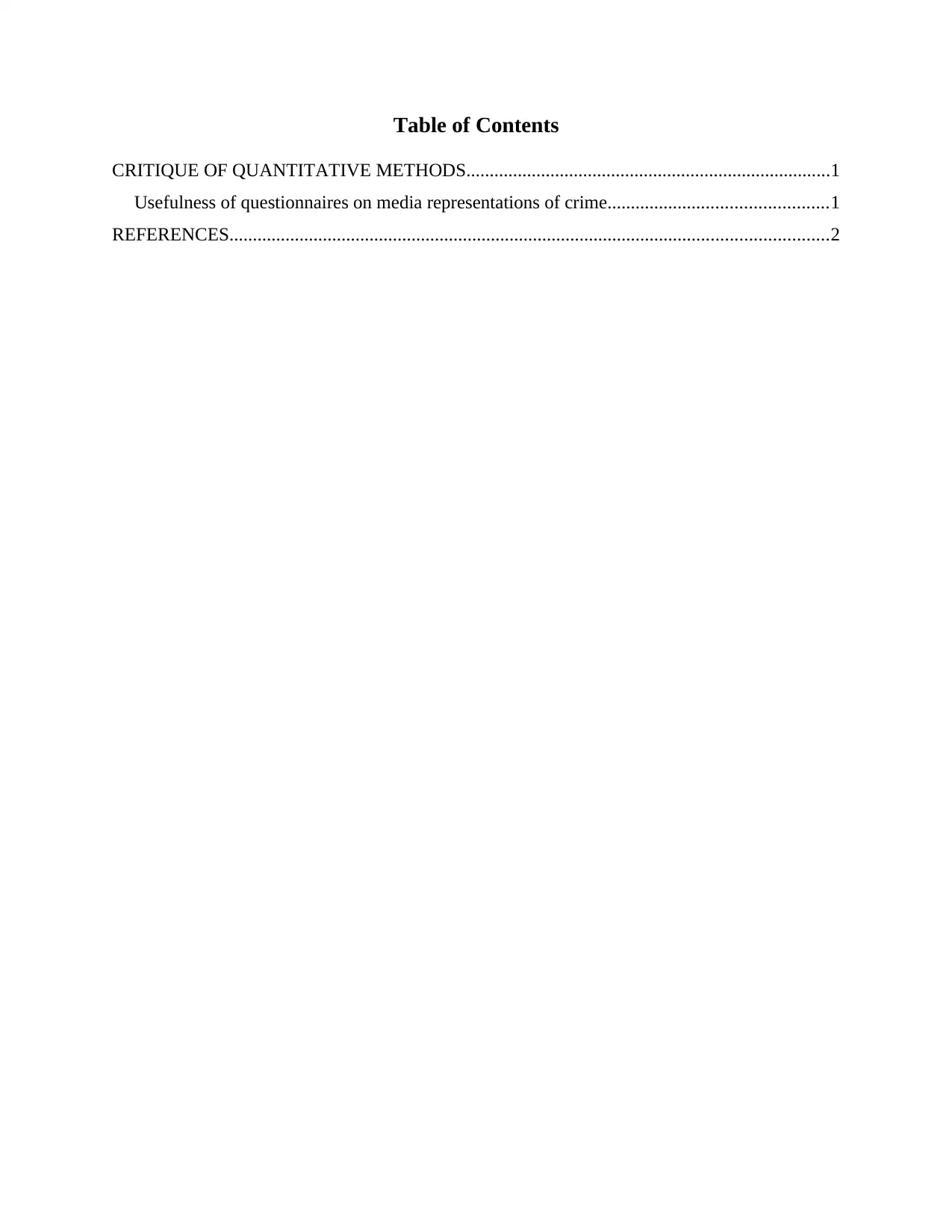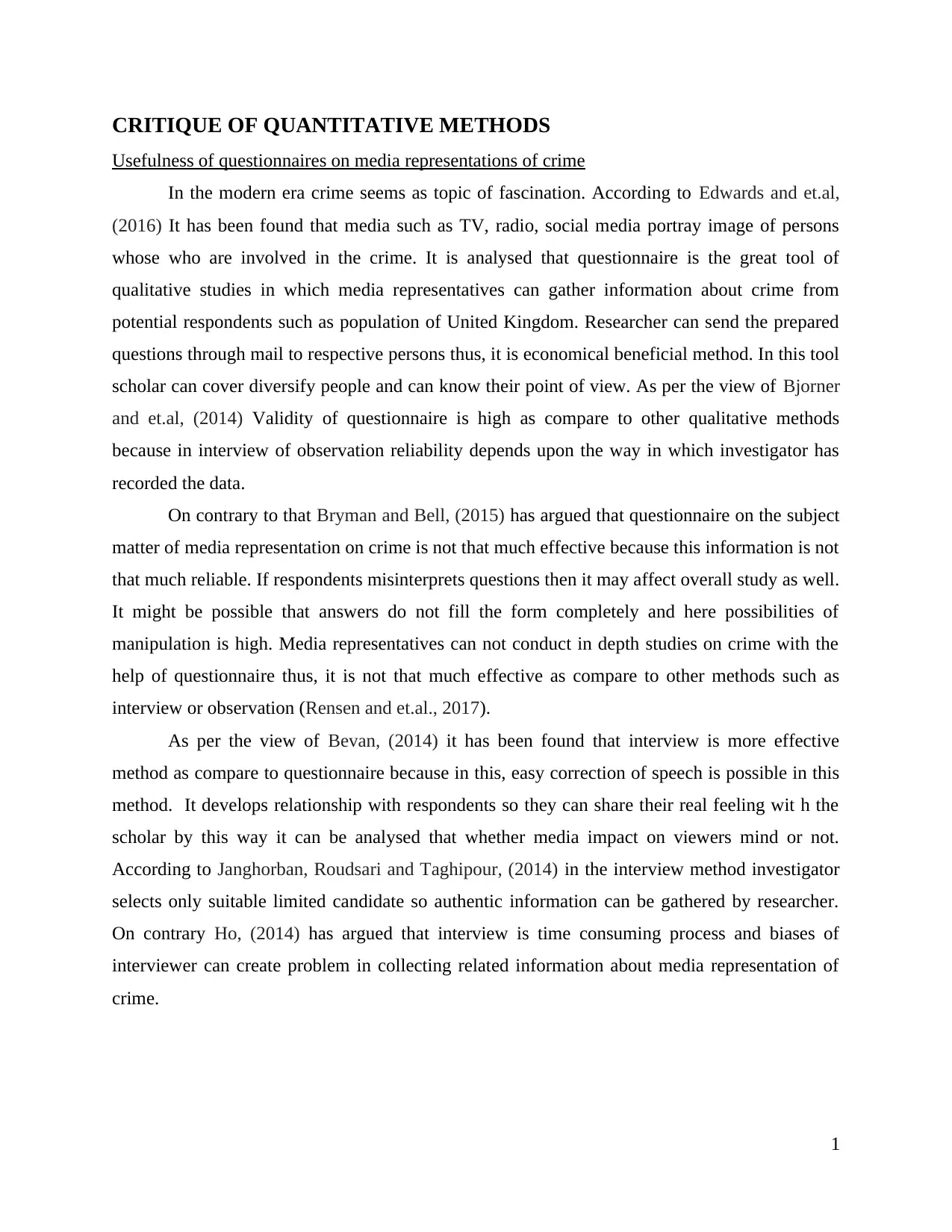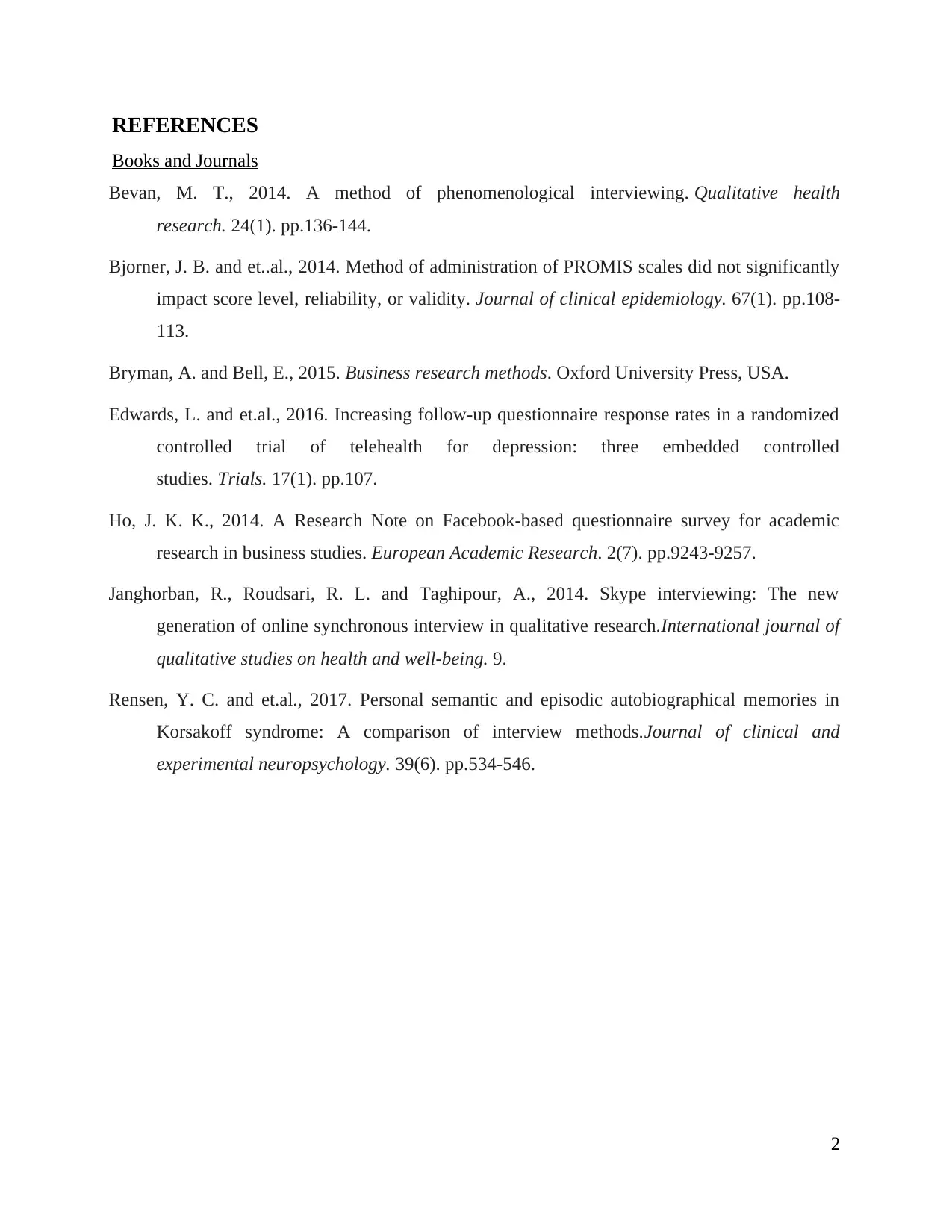Research Methods Assignment: Critique of Quantitative Methods on Crime
VerifiedAdded on 2020/06/04
|4
|666
|36
Homework Assignment
AI Summary
This assignment critically examines the use of quantitative research methods, specifically questionnaires, in analyzing media representations of crime. The paper begins by highlighting the perceived benefits of questionnaires, such as their economical nature and ability to reach a diverse population, allowing researchers to gather various viewpoints. However, the paper then critiques the effectiveness of questionnaires, citing concerns about potential misinterpretations, incomplete responses, and the inability to conduct in-depth studies. The analysis contrasts questionnaires with alternative qualitative methods, such as interviews, which are considered more effective due to their capacity for clarifying responses and establishing rapport with respondents. The paper references several academic sources to support its arguments, ultimately concluding that while questionnaires have their place, they may be limited in their ability to capture the complexities of crime representations in media compared to methods offering more detailed and nuanced data collection.
1 out of 4






![[object Object]](/_next/static/media/star-bottom.7253800d.svg)